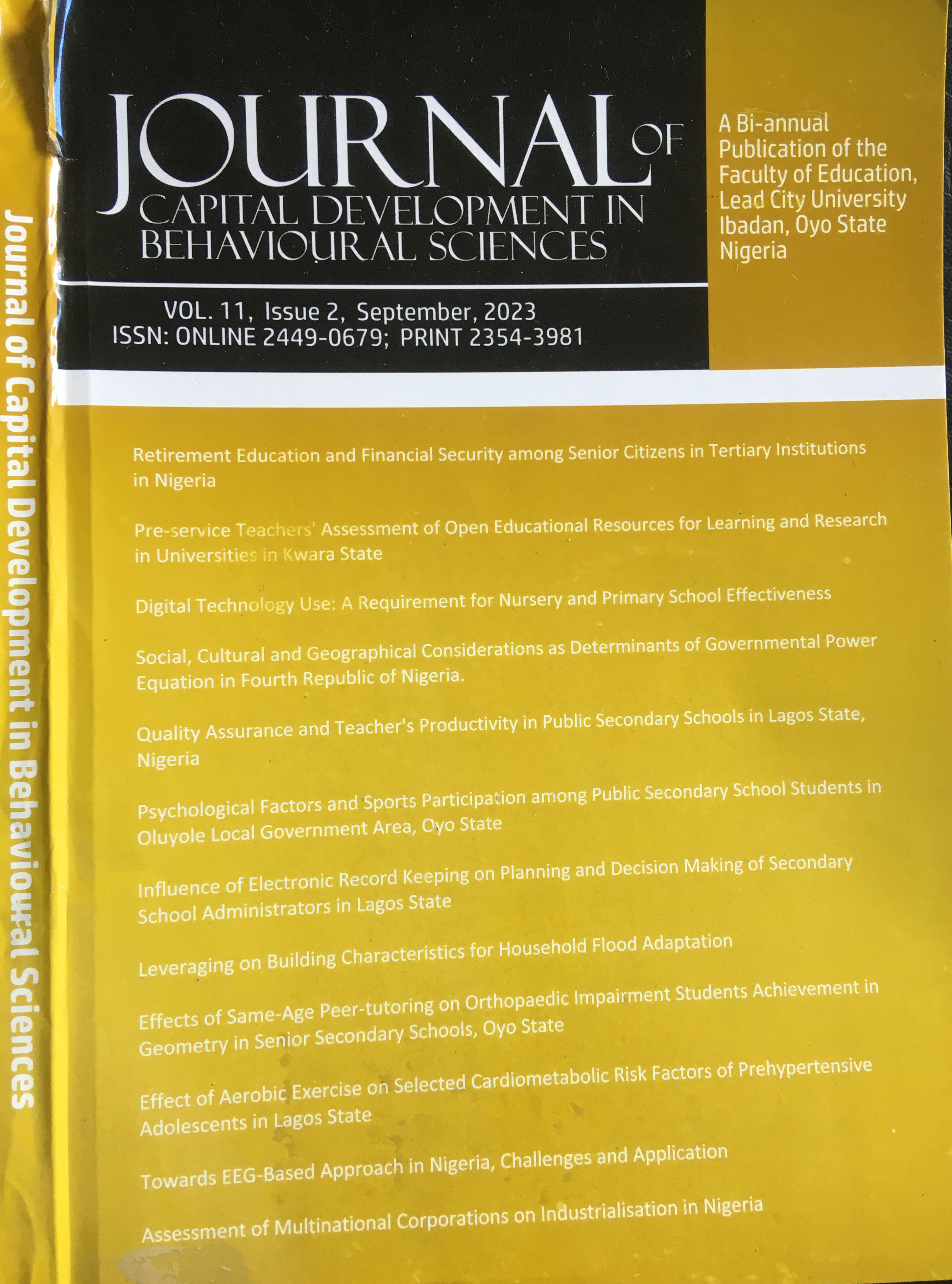Effects of Same-Age Peer-tutoring on Orthopaedic Impairment Students Achievement in Geometry in Senior Secondary Schools, Oyo State
Keywords:
Orthopedic Impairment, Same-Age Peer Tutoring, Geometry, AchievementAbstract
This study examined the effects of peer tutoring teaching strategy on
orthopaedic impairment students achievement in geometry in Senior
Secondary Schools II Oyo State. The study employed pre-test, posttest,
control group quasi experimental design. The population consists of 25
orthopaedic impairment students’ in all inclusive Senior Secondary Schools
II Oyo State. The sampling technique used is intact. The instruments used
were Students Mathematics Anxiety Rating Scale (SMARS) (r=0.85)
Geometry Achievement Test for Students’ (GATS) (KR 20 = 0.97),
Geometry Lesson Plan (GLP) and Geometry Lesson Notes (GLN). Seven
hypotheses were postulated and tested. Data were analyzed using
ANCOVA. The results revealed significant main effect of treatment on
students’ with orthopaedic impairment achievement in geometry (F(2, 23) =
12.94; p<0.05, partial ?
2 = 0.65). There was no significant main effect of gender on students’ with orthopaedic impairment achievement in geometry
(F(1, 24) = .03; p>.05, partial ?
2 = .002. ?
2 = 0.03). It was concluded
that treatment have no effect on gender and anxiety on students’ with
orthopaedic impairment academic achievement. It was suggested that
same-age peer tutoring should be employed to enhance orthopaedics
impairment students’ achievement in geometry

